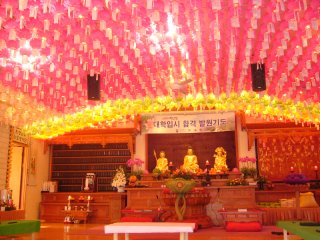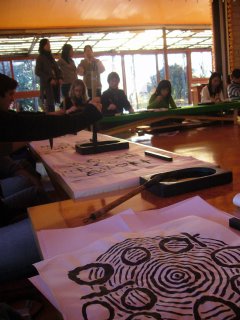With a population around 514,000, Pohang is the largest city on Korea's east coast.
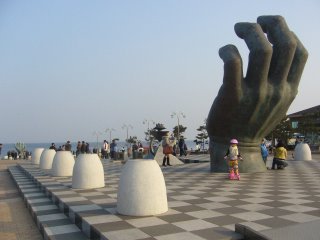 This is Homigot Sunrise Plaza where you can view both hands in this photo. On New Years, thousands of people gather for the first sunrise of the year.
This is Homigot Sunrise Plaza where you can view both hands in this photo. On New Years, thousands of people gather for the first sunrise of the year.
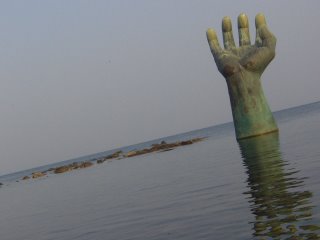
During sunrise, the sun appears to be held in this ocean hand. I've only seen the pictures & it looks very picturesque. This hand doesn't look large, but don't you be fooled by this trick photography.
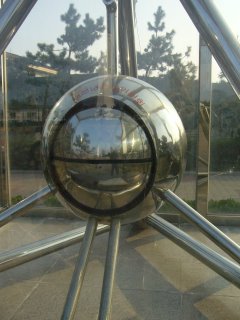
This interesting thing is the first of four models in the world. It's a "sunlight fire collector" that captures the sun's energy & converts it into a flame. I guess it's sealed in plexi-glass to keep it from starting fires all over the place? In all seriousness, I was fascinated with it.
 This sign states that this is the biggest cooking pot in Korea. It was used to make rice cake soup for 20,000 people on New Years Day 2004.
This sign states that this is the biggest cooking pot in Korea. It was used to make rice cake soup for 20,000 people on New Years Day 2004.
 For what it's worth, at one point in high school I was actually a lifeguard.
For what it's worth, at one point in high school I was actually a lifeguard.
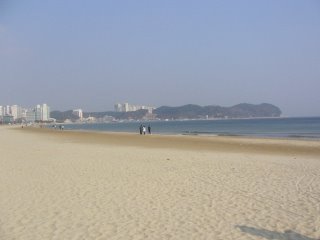
Bukbu Beach
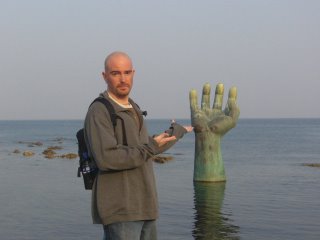
Here I am, still intrigued with these hands.

Night view of POSCO, which claims to be the world's second-largest steel producer.
 Christina, Joo, & Amanda on a beautiful sunny day!
Christina, Joo, & Amanda on a beautiful sunny day!
 A family of snowboarders. It was good to see that the skiing to boarding evolution exists in S. Korea as well.
A family of snowboarders. It was good to see that the skiing to boarding evolution exists in S. Korea as well.  Luckily, Alex spoke English & invited me in their advanced group.
Luckily, Alex spoke English & invited me in their advanced group. 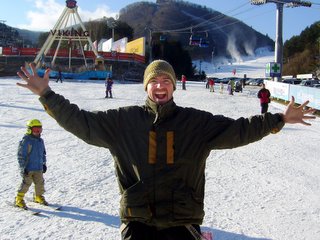
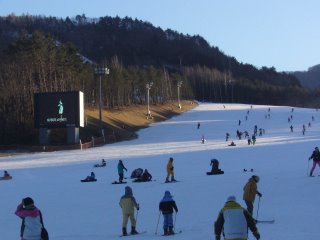




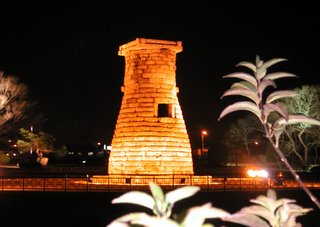

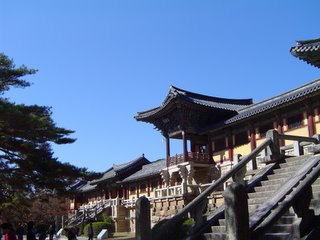










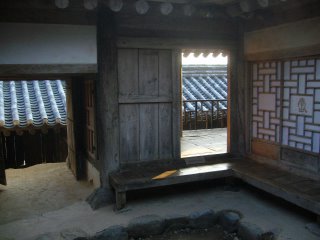


 There is actually a second floor, but it didn't look solid enough to test. I would hate to be the bright guy with my legs dangling through a cracked floor & try to explain that one.
There is actually a second floor, but it didn't look solid enough to test. I would hate to be the bright guy with my legs dangling through a cracked floor & try to explain that one. 




 This place wasn't the easiest to find.
This place wasn't the easiest to find. 


